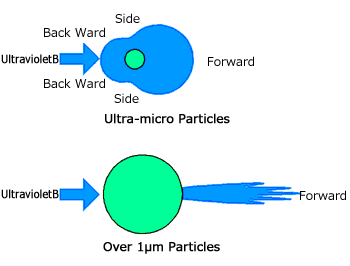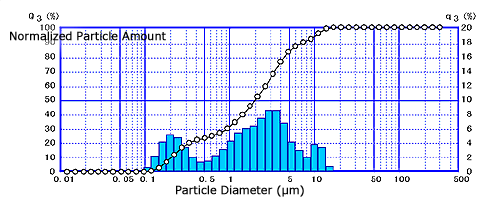Cosmetics
Cosmetics
Sun Block Cream
Sun block cream, or also called UV protection cosmetics or sunscreen, is vital for when you go out in the summer. In particular, when traveling around the southern islands of Miyakojima or Ishigakijima, south west of Okinawa, your skin will turn pink and become inflamed if you do not cover yourself with a generous helping of sun block cream, even if you are not out swimming, and prevent you from taking in and enjoying the subtropics at your leisure. Also, take sufficient care not to forget to apply sun block cream or accidently rub it off since this will cause red, sore patches.
Causes of tanning are UVB Ultraviolet B, medium wave (280 to 320 nm) and UVA Ultraviolet A, long wave (320 to 400 nm). UVC Ultraviolet C, short wave (200 to 280 nm) and some UVB (290 nm or less) do not normally cause tanning since they are absorbed by the ozone layer. However, countermeasures for these rays will be also needed in the future as ozone layer depletion progresses.
UVB causes the skin to become pink and inflamed or causes a blister, while UVA causes the skin to darken and causes aging (wrinkles and sagging).
For blocking ultraviolet rays, sun block cream contains a blend of at least two components, UV absorber and UV scattering agent.
UV absorber mainly absorbs UVB, and converts this to other energy (e.g. phosphorescence, fluorescence) to prevent the affect of UV on the skin.
Whereas, UV scattering agent mainly scatters UVA to prevent it from reaching the skin. It may be considered that it reflects UVA., from an overall point of view. Ultra-micro particles, such as titanium oxide and zinc oxide, are used as this UV scattering agent.
Phrases such as "Nano-size UV cut powder" and "Ultra-micro particle blend" are often seen in advertisements for sun block cream.

Fig. 1 Scattered Light Intensity and Direction Dependent on Particle Size
As shown in Fig. 1, almost all light scattered from particles of 1 µm or larger in size is concentrated in the forward direction. Accordingly, almost no effect in blocking UV can be expected since scattered light of the same wavelength is emitted in this forward direction. However, with ultra-micro particles, scattered light is emitted to the side and back in addition to the front. If ultra-micro particles form multiple layers on the skin, the multiple ultra-micro particle layers cause multiple scattering to occur and more scattered light is directed to the side and back, which means that high effectiveness in blocking UV can be expected.

Fig. 2 Measurement Example of Particle Size Distribution of Sun Block Cream
Fig. 2 shows a measurement example of particle size distribution of sun block cream. You can see that particles of 1 µm or smaller in size account for about 30 % of the total volume. These ultra-micro particles function as a UV scattering agent.
Furthermore, primary particles used as the raw material contain particles even smaller in size. These particles might aggregate to a certain extent in the end product.


